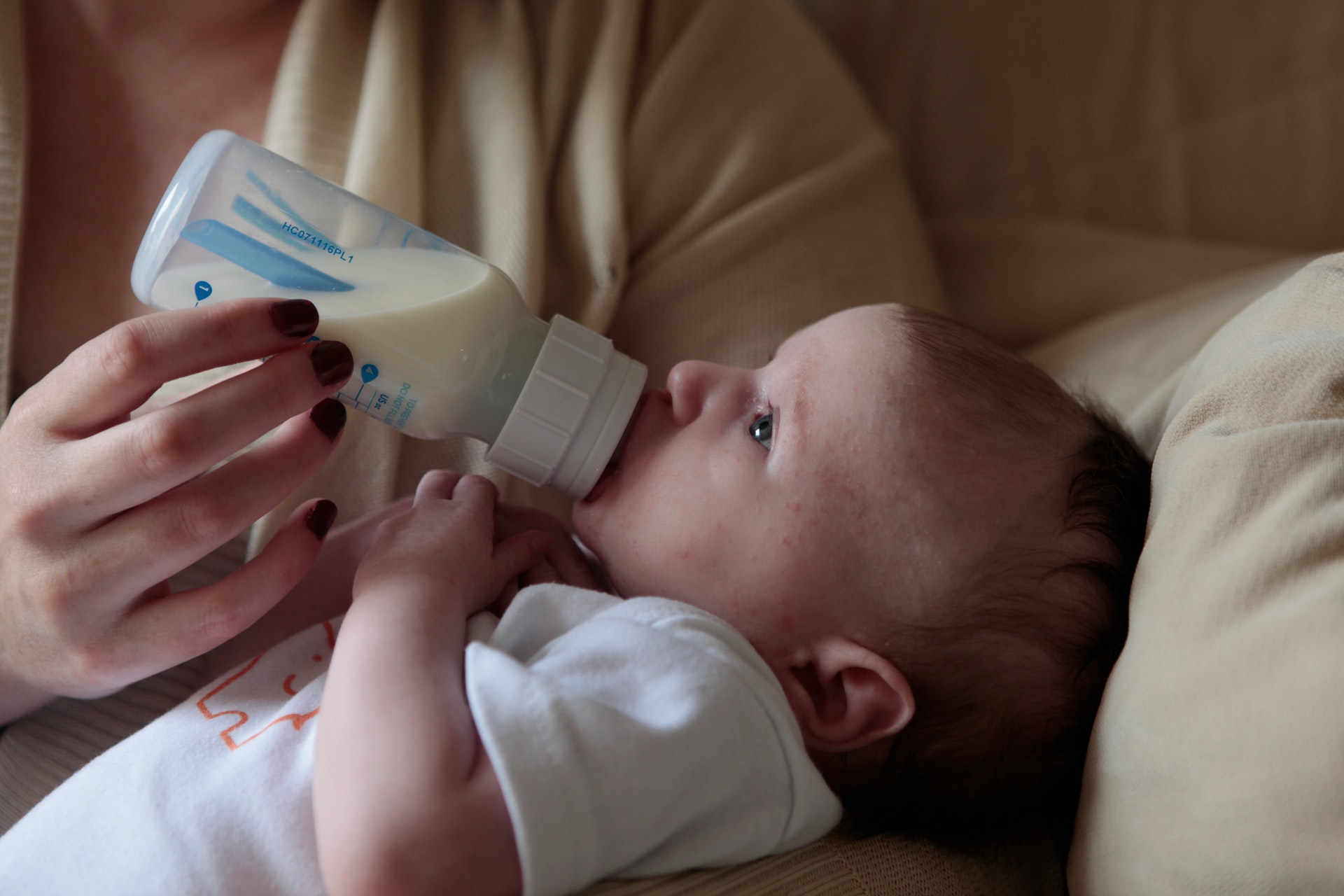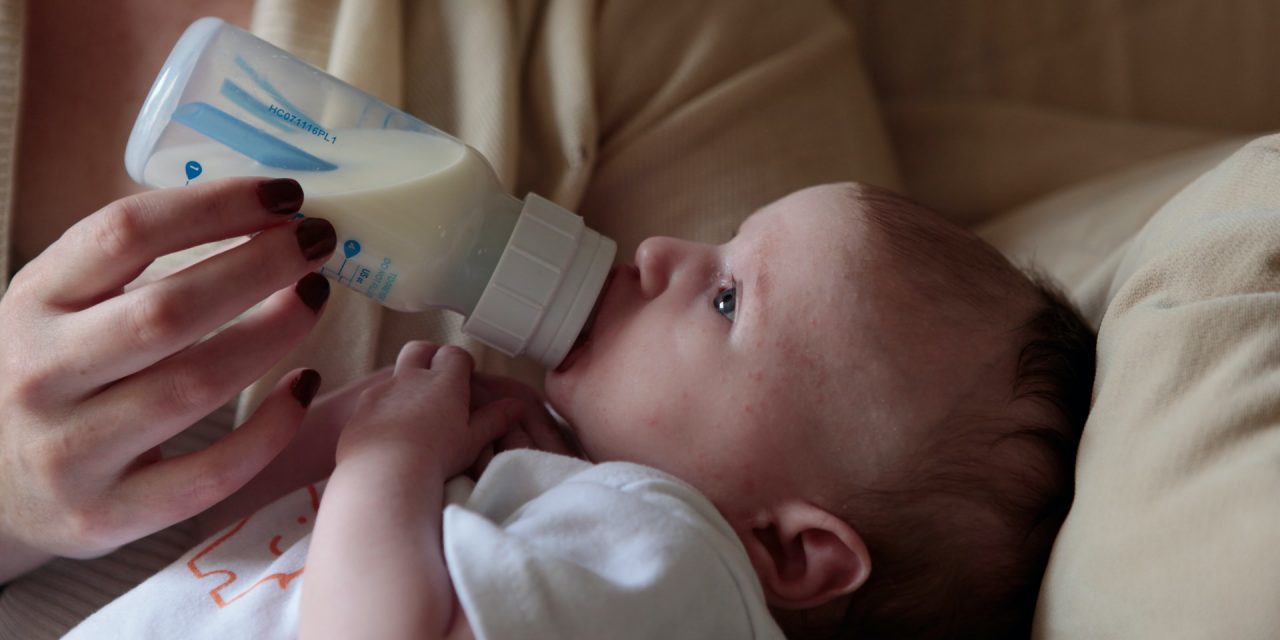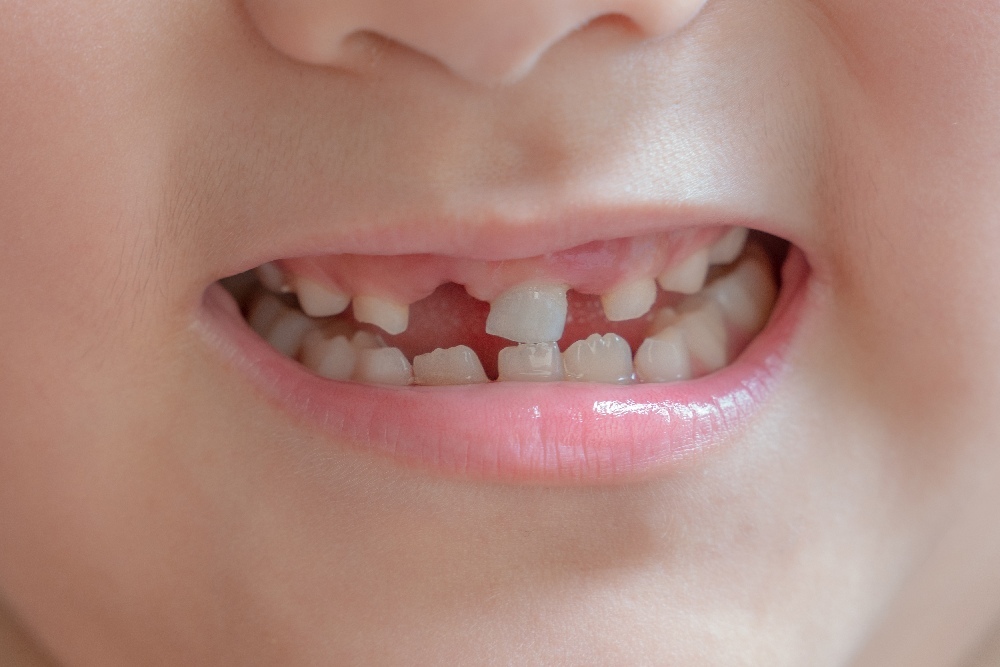No matter how much you’d like to breastfeed your little one, it won’t really be possible at all times. If you’re planning to resume your work, you’ll most likely have to get your baby accustomed to bottle-feeding. It shouldn’t come to you as a surprise that breastfed babies can take time to get used to bottle-feeding. That’s why, as a mother, you need to make that experience comfortable for your little one. It’s good if you breastfeed your baby and bottle-feed part-time to help your little one with the new transition. One of the most effective techniques you can consider is paced bottle feeding. Here’s your complete guide to paced bottle feeding for a healthy and hearty baby.
What Is The Paced Bottle Feeding Method?
Paced bottle feeding is a method of bottle feeding your baby that actually mimics breastfeeding. Paced bottle feeding gives your baby total control of how frequently they need to be fed and how much they need. No wonder it’s also called ‘responsive feeding’, as your baby can choose to decide their own pace for feeding.

Paced bottle feeding mimics breastfeeding and is also called responsive feeding.
With the help of this method, your baby learns to suck and work harder to be able to get the milk, unlike with typical bottle feeding. For that to happen, you have to hold your baby upright whereas the bottle needs to be held in a horizontal position rather than being angled down. So, as opposed to traditional bottle feeding, your baby learns to drink at their own pace. The risk of obesity during later childhood also decreases.
Benefits Of Paced Bottle Feeding
One of the reasons why babies get overfed and ingested is due to bottle feeding. That’s because it allows them to drink the milk at a faster rate. If your baby has gas or colicky crying, it can be because your little one has swallowed too much air while being bottle-fed. That’s why paced bottle feeding is a great way to slow down the rate of feeding. It lets your little one have more control over their needs. It also reduces the risk of digestive discomfort in your baby. So, with the help of this method, you’re actually helping your baby build healthy eating habits that’ll stay with them throughout their life.
Step-By-Step Guide To Paced Bottle Feeding
When it comes to paced bottle feeding, there is no one perfect way of doing it. You just have to be mindful and figure out what feels right for you and your little one. Here is a step-by-step guide for you to practice paced bottle feeding with your baby:
Choose The Right Bottle For Your Baby
If you want to help your baby with their feeding pace, then you should see to it that you use the right size bottle for paced bottle feeding. We recommend you use a slow-flow bottle along with a wider nipple base. It’s natural for you to feel more concerned about feeding your baby in a way that seems similar to breastfeeding. For that, you can choose any specially designed breastfeeding bottles for newborn babies.
Carefully Position Your Baby
You need to make sure that your baby’s head and neck are supported properly while you hold them in an upright position. Do keep in mind that paced bottle feeding can take a good amount of time, around 20-30 minutes. So, to keep yourself comfortable, you can use pillows to support your hands. Also, see to it that you maintain eye contact with your baby while feeding, it will help strengthen your bond with your little one.
Position The Bottle Horizontally
Your baby may show certain hunger cues like putting the fingers inside the mouth, licking or smacking the lips, turning the head towards the bottle, etc. That’s when you can gently stroke your baby’s mouth or cheeks to make them open their mouth wide open.
To make sure that your baby has a deep latch, see to it that you insert the nipple at the top of the tongue into their mouth. If you want to help your baby have control over the flow, make sure that you hold the bottle horizontally and then begin the feed.
Let Your Baby Suck The Nipple Without Any Milk
Always let your baby suck the nipple without any milk. That would make them suck harder for the milk, helping to mimic the natural breastfeeding experience. After some time you can start feeding by slightly tipping up the bottle to ensure that the nipple is half full of milk.
You can let your baby have a good number of sucks, between 5 and 10. Take a small break and gently touch the bottom lip of your little one before you start feeding again. When you feel your little one is ready to be fed again, let them try harder to pull the nipple to get the milk.
Help Your Baby To Pace The Feeding By Taking Adequate Breaks
Paced bottle feeding takes time and so you’ll need to take adequate breaks while feeding your baby. This will help you understand how much your baby needs to be fed and for how long. One of the best ways to mimic breastfeeding while practicing paced bottle feeding is by switching sides where you hold the bottle.
To make your baby feel more comfortable, you can gently keep rubbing their back while feeding. Don’t forget to pay careful attention to fullness cues. These could be your baby turning the head away from the bottle and nipple, relaxing their hands and jaw, or getting easily distracted.

Paced bottle feeding lets the child take breaks in between. It makes them more aware of their hunger patterns.
Conclusion
The paced bottle feeding is a great way to give a healthy appetite to your baby. With frequent paced bottle feeding sessions, your baby will learn to take breaks in between and suck the nipple when they are ready to be fed again. We also want to remind you that you need to introduce complementary feeding to your baby after the first 6 months as their nutritional requirements increase. As a mother, all you have to do is keep an eye for both, hunger and fullness cues from your baby. Don’t forget that along with feeding your baby, you also have to take care of their vaccination and immunization. You can use the ImmunifyMe app to keep digitized records of your little one’s immunization and vaccination schedules.
FAQs On Paced Bottle Feeding
How Long Should You Pace Bottle Feed?
When you are using the pace bottle feeding method, make sure that you pay attention to your baby’s hunger cues. These could be turning the head towards the nipple or licking the lips. You can let your baby suck the nipple for around 15-20 minutes and then take a break. See to it that you feed a good amount i.e. 2-5 ounces of milk to your little one per session.
How Do You Do Paced Bottle Feeding?
When practicing paced bottle feeding, see to it that you hold your baby in an upright position. Hold the bottle horizontally and make sure you gently take the nipple towards your baby’s mouth. After your baby opens the mouth, you can gently advance the nipple in their mouth.
Do You Have To Pace Bottle Feed?
There are chances that your baby will take in too much air when you are bottle feeding. That can cause problems like gas, ingestion, stomach pain and it increases the risk of your baby being overfed. That’s why paced bottle feeding is the best way to let your baby have control over how much it needs to be fed and for how long.
What Are Paced Feedings?
The paced bottle feeding technique is a good way of letting your baby take control over the amount of milk to be fed and also its frequency. This method helps your baby take adequate breaks while feeding. It also avoids overfeeding as the flow of milk from the bottle nipple to the baby’s mouth is slowed down.






